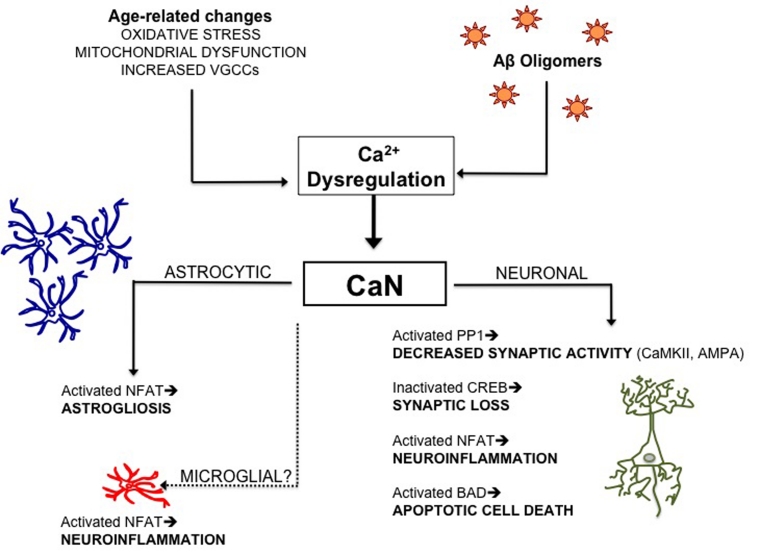FIG. 1:
Calcineurin in the aging brain. A number of factors, including oxidative insult, mitochondrial dysfunction, and increased numbers of VGCCs decrease the aged brain’s ability to buffer Ca2+ levels. The additional insult of Aβ oligomers further disrupts Ca2+ homeostasis, resulting in a subtle, prolonged increase in calcium that promotes the hyperactivation of CaN. This important phosphatase mediates the dephosphorylation of four cellular proteins: pCREB, pNFAT, p-PP1 and pBAD. CaN hyperactivation could explain several observations in AD models and pathogenesis; decreased synaptic activity, synaptic loss, neuroinflammation (neuronal and astroglial), and cell death. Therefore, inhibition of CaN in the CNS may be viable therapeutic strategies for combating early stage AD impairment.

